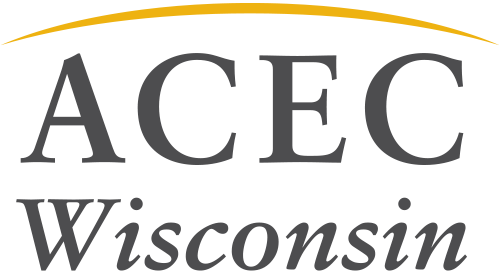Innovative Design Delivers Welcoming Gateway to Fitchburg

Written by: Mike Scarmon, PE, KL Engineering
![]()
Innovative Design Components Help Deliver Fitchburg Road Project Quickly and Under Budget During COVID
The North Fish Hatchery Road (NFHR) Reconstruction project designed and reconstructed 1.5 miles of a 6-lane, divided roadway south of the Madison Beltline (US 12/14). This heavily traveled, multi-lane urban road serves area residents, commuters, schools, and businesses, and accommodates more than 40,000 vehicles each day.
After more than thirty years, the NFHR pavement had deteriorated. Dane County and the City of Fitchburg discussed a jurisdictional transfer of the road in 2016 with the replacement of the deteriorating road surface as its primary motivation. In 2018, the city partnered with KL Engineering, Inc. for design and construction oversight of the project.
Early conversations with stakeholders uncovered additional issues needing resolution that expanded the project scope beyond pavement replacement. Roadway enhancements were required for safe and efficient traffic flow, as well as accommodations for pedestrians and bicyclists, and facilities for public transit use, to mention a few.
In the fall of 2019, the construction was awarded to Integrity Grading & Excavating, Inc. for $20.5 million. By mid-November 2021, the project was substantially complete with actual costs totaling $19.8 million, a savings of $700k.
 The completed NFHR Reconstruction project delivered safety and capacity updates to multiple intersections, two new intersections, new water and sanitary infrastructure, sustainable stormwater features, a rehabilitated 3-cell box culvert, new decorative retaining walls, a new pedestrian bridge, an expanded shared-use path, mass transit amenities, upgraded lighting and adaptive traffic signal technologies, and appealing soft-and-hard streetscaping elements.
The completed NFHR Reconstruction project delivered safety and capacity updates to multiple intersections, two new intersections, new water and sanitary infrastructure, sustainable stormwater features, a rehabilitated 3-cell box culvert, new decorative retaining walls, a new pedestrian bridge, an expanded shared-use path, mass transit amenities, upgraded lighting and adaptive traffic signal technologies, and appealing soft-and-hard streetscaping elements.
The project is noteworthy because it illustrates how innovative design techniques helped deliver a multi-layer project within an expedited timeframe, under budget, and during the COVID pandemic.
The design team’s creative solutions helped keep the project within a limited footprint and minimized the potential negative impacts of excavation/construction on stakeholders and the environment.
Below are examples of several of the resourceful design techniques that contributed to the project’s successful outcome.
- Community Engagement - To meet the needs of those affected by the NFHR project, the KL team reached out to community stakeholders early in the design process, engaged them in design ideas, and kept them informed throughout the project. As a result, stakeholders felt a sense of ownership and were supportive.
- Compact Roundabout – The design team pioneered a custom compact roundabout and an extended median to resolve excessive speed, illegal U-turn activity, and extensive crash history within an existing right-of-way footprint at the busy Greenway Cross/Bryant Road intersection.
- Retaining Wall - A narrow soldier pile with timber lagging retaining wall was created to minimize excavation and construction impacts on several adjacent businesses. The final cast-in-place concrete wall face was later integrated with it and aesthetically blended to match other walls along the corridor.
- Stormwater Runoff - The intersection at Greenway Cross routinely experienced flooding and had no viable options for rerouting stormwater. To resolve this issue, the team created an oversized underground storm system to add storage capacity, as well as added driveway strip/vane drains to control runoff and a detention pond to absorb portions of stormwater and improve water quality.
- Protecting Natural Springs - To protect the fish and maintain the water levels of the natural springs at the adjacent Nevin Springs Fish and Wildlife Area, the team created wells to monitor groundwater levels. Additionally, alternative backfill material and enlarged concrete collars prevented groundwater from entering the utility trenches and rerouted the water away from the hatchery.
- Preserving Oak Savanna - To add a new bus lane near the historic oak savanna, the design team shifted the NFHR roadway alignment. This minimized the risk of potential tree/plant disturbance and the spread of oak wilt and eliminated the costly relocation of high-voltage transmission lines.
- Recycled Concrete - Due to past problems, the City of Fitchburg prohibited the use of recycled concrete pavement in projects. After bids were higher than anticipated, the KL team convinced the city to reconsider reusing it if strict quality control measures were established. This decision helped the project realize $700,000 in cost savings.

The ingenuity of the design team helped the NFHR Reconstruction project reach successful fruition. Today, the roadway now serves the well-being of the community by improving safety, multi-modal facilities, and connectivity. What’s more, the NFHR corridor is today regarded as a welcoming, vibrant commercial, residential, and recreational corridor, and the “Gateway to Fitchburg.”
About the Guest Blogger
 Mike Scarmon, PE, has 21 years of extensive knowledge and practice in traffic engineering, roadway design, electrical design, technical research, and special studies. He is the Director of Infrastructure Services for KL Engineering, Inc., a professional civil engineering firm with a core specialization in transportation engineering. The firm has offices in Madison, Green Bay, Menomonie, and Germantown, and offers civil engineering, survey, and environmental services for both public and private clients.
Mike Scarmon, PE, has 21 years of extensive knowledge and practice in traffic engineering, roadway design, electrical design, technical research, and special studies. He is the Director of Infrastructure Services for KL Engineering, Inc., a professional civil engineering firm with a core specialization in transportation engineering. The firm has offices in Madison, Green Bay, Menomonie, and Germantown, and offers civil engineering, survey, and environmental services for both public and private clients.
